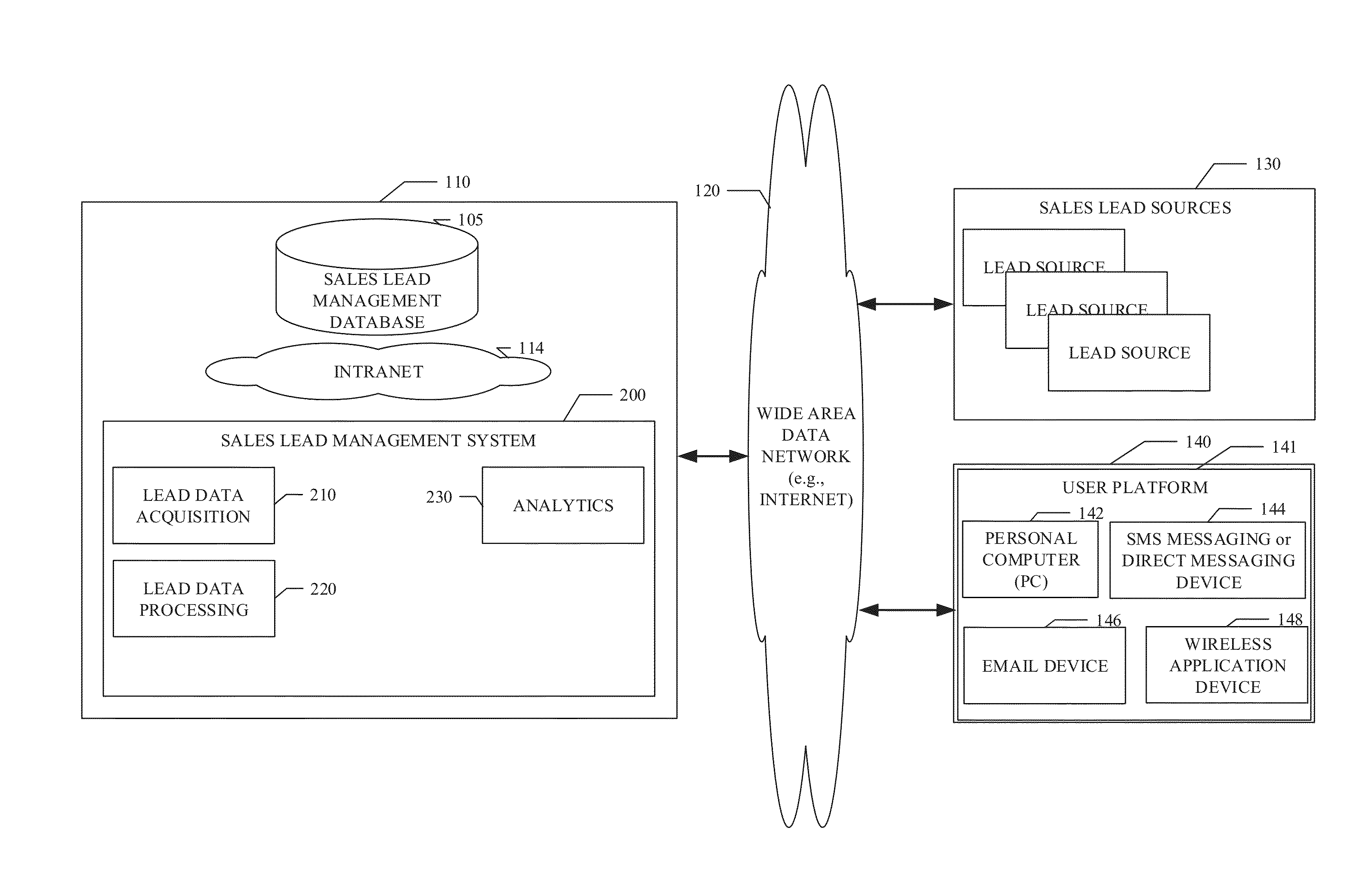System and method for full funnel modeling for sales lead prioritization
a funnel modeling and funnel technology, applied in the field of computer-implemented software and networked systems, can solve the problems of low quality, time-consuming, time-consuming, and time-consuming to construct and error-prone, and achieve the effect of reducing the cost of sales qualification process, less efficient, and saving tim
- Summary
- Abstract
- Description
- Claims
- Application Information
AI Technical Summary
Benefits of technology
Problems solved by technology
Method used
Image
Examples
Embodiment Construction
[0019]In the following description, for purposes of explanation, numerous specific details are set forth in order to provide a thorough understanding of the various embodiments. It will be evident, however, to one of ordinary skill in the art that the various embodiments may be practiced without these specific details.
[0020]Referring to FIG. 1, in an example embodiment, a system and method for full funnel modeling for sales lead prioritization are disclosed. In various example embodiments, an application or service, typically operating on a host site (e.g., a website) 110, is provided to simplify and facilitate sales lead management for a user at a user platform 140 from the host site 110. The host site 110 can thereby be considered a sales lead management site 110 as described herein. In the various example embodiments, the application or service provided by or operating on the host site 110 can facilitate the downloading or hosted use of the sales lead management system 200 of an ...
PUM
 Login to View More
Login to View More Abstract
Description
Claims
Application Information
 Login to View More
Login to View More - R&D
- Intellectual Property
- Life Sciences
- Materials
- Tech Scout
- Unparalleled Data Quality
- Higher Quality Content
- 60% Fewer Hallucinations
Browse by: Latest US Patents, China's latest patents, Technical Efficacy Thesaurus, Application Domain, Technology Topic, Popular Technical Reports.
© 2025 PatSnap. All rights reserved.Legal|Privacy policy|Modern Slavery Act Transparency Statement|Sitemap|About US| Contact US: help@patsnap.com



